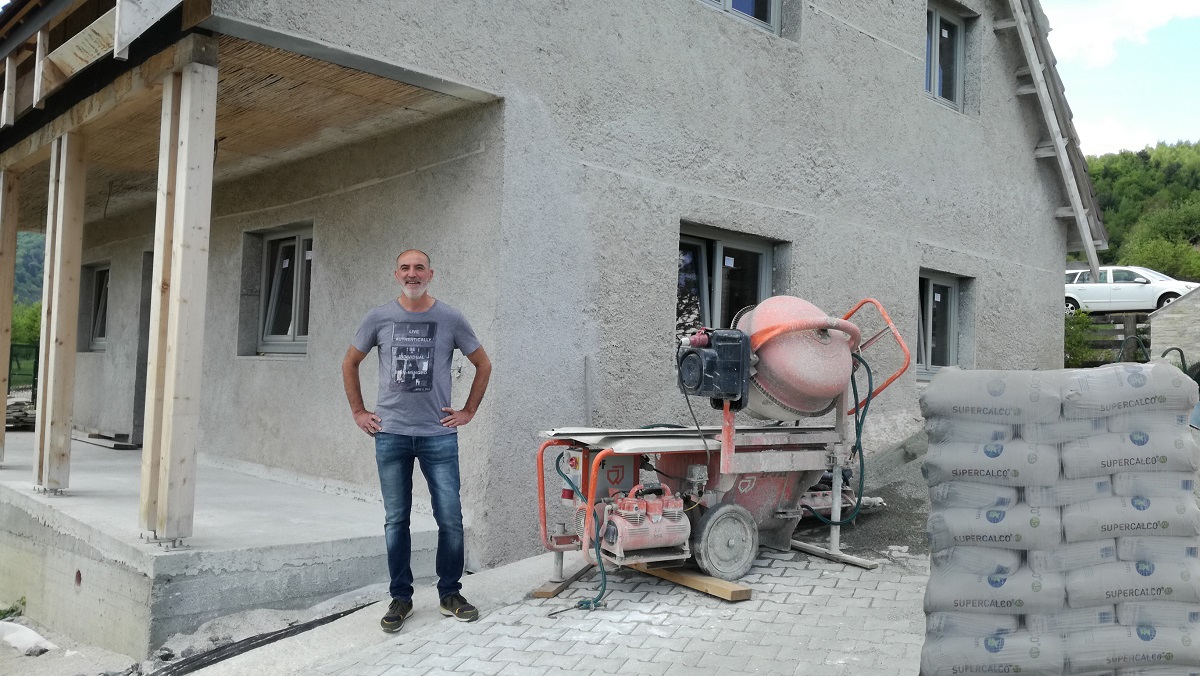Residential and commercial buildings are some of the greatest energy consumers and CO2 emitters. At the moment, buildings are responsible for 40% of the total energy consumption in Europe, while thermal heating is the greatest energy consumer, at over 50%.
Given this situation, Europe is trying to make use of the latest technological advances and to promote a higher energy efficiency.
Hemp building materials became increasingly popular in construction works, as they contribute to the reduction of the carbon footprint caused by buildings, and they may even lead to the achievement of a negative footprint for the entire building.
Hempcrete or Hempline is a bio-composite material made from hemp hurds mixed with lime-based binders. Its multiple benefits (such as permeability, negative net carbon emissions, thermal insulation, acoustic comfort and durability) have led to an increase of its potential on the construction market – for instance, in France, hemp saw a 400% increase in the last 10 years (source: www. researchgate.net/publication/265450145_Building_with_Hemp_and_Lime).
Interview with Cătălin Boteanu, the first owner and constructor of a hemp house built using the hemp pulverization method, in Romania
Q: Lately we are witnissing a trend of going back to the roots, leading a healthier lifestyle . Why did you choose the combination of hemp and lime, out of all the other existing options?
A: A few years ago I stayed at a friend of mine, in Germany, in a house made of hempcrete. The first thing I noticed was that in summer, at 30oC, his house was cool, and I had no symptoms of my usual allergies, no sneezing or dry throat, everything felt so comfortable! Later, I did a thorough research of the benefits of hempcrete constructions and that is how I eventually got to what you see now. 
Q: How did the works evolve? Did you have any challenges you had to overcome?
A: The works took a while, but it’s all about the planning. Laying the foundation took about two weeks, the wood structure took three weeks to prepare and one week to assemble, then it came to the pulverizing stage, which we did at a speed of about 3 cubic meters a day. So it depends on the total surface, on how many workers are involved, and on all the other essential works, just like in any other type of house.
Q: How important is the quantity and the quality of the lime used in the mix? Does it affect the properties and microstructure of hempcrete (in terms of insulation, etc.)?
A: I would say it is fairly important. Many people come up with a lot of ideas but overlook the importance of the materials. We used SuperCalco A5 – produced by Carmeuse - which we sent to France for analysis. They confirmed the quality and consistency of the samples we had sent, so we were satisfied. We used it for the interior wall plastering and it worked really well.
Q: What are the costs of a hempcrete construction?
A: This is a question that people ask all the time. However, a house doesn’t only include the walls, the foundation or the structure. A house is an entire project divided in cost sections (from foundation, to the necessary equipment for underfloor heating, and so on), so it’s a matter of personal preference and choice. It depends whether you build it yourself or not… In the end, there isn’t a significant difference of cost between building in the traditional way and using hempcrete; the costs are similar and anybody can make their own choice.
What is the role of lime in the Hempcrete mix?
- Permeability: Allows the transfer of water vapours through the walls
- Reduced thermal conductivity: Lower thermal conductivity than classical cement
- Higher CO2 absorbtion: More CO2 is absorbed during the carbonation process in the case of hemp
- Flexibility: Greater flexibility than cement; reduces cracks
- Biocide: due to the high pH, lime acts as a biocide preventing mould
